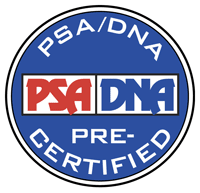Min Bid: $1,000 (0 bids)
The 30 Minute Rule begins April 17 at 7:00 PM EDT. An Initial Bid Must Be Placed By April 17 at 6:00 PM EDT To Participate After 6:00 PM EDT
TLS signed by Orville Wright, “Wright Brothers, O.W.,” three pages, 8.5 x 11, Wright Brothers letterhead, March 15, 1912. Lengthy letter to Mr. Henry Woodhouse, publisher of the Aero Club of America Bulletin, in part: "Your letter of March 11th, containing an article on the 'Evolution of the Hydraeroplane,' is received. It seems to us that you do not sufficiently discriminate between mere pontoons and hydroplanes. There is about the same difference in principle between a pontoon and a hydro-plane, as there is between an airship and a flying machine.
With the mere pontoon it is impossible to secure high speeds, except by the expenditure of enormous power; and then the speed is quite limited, because the force required to displace water, increases as the square of the speed. The principle of the hydroplane is to skim on the surface, so that there is practically no displacement of the water. The laws of resistance governing the two are entirely different.
Without the mention of Comte de Lambert, the article is very much like the play of Hamlet without Hamlet. Although suggestion of the hydroplane idea had been made years ago, and although Froudehad made some experiments without result, as far back as 1872, Comte de Lambert was the real inventor of the hydroplane. He was the first to produce a successful one, and all modern hydroplanes are based upon his work. In 1897 Comte de Lambert experimented with a catamaran formed of two narrow floats, to which were attached four transverse planes, whose inclinations could be varied two to three degrees. At a speed of 10 miles an hour, the floats were lifted entirely out of the water and the machine glided over the surface of the water on the four hydroplanes. Comte de Lambert continued these experiments during the following years up to 1907, and he succeeded in increasing the speed to 34 miles an hour.
In 1905-1906, Ernest Archdeacon with the assistance of Gabriel Voisin and Louis Bleriot, experimented on the river Seine with gliding machines of the Chanute-Wright type, equipped with pontoons, which were towed by fast motor boats. This was before the French attempted to equip the aeroplanes themselves with motors. These floats, however, if we remember correctly, were none of them equipped with hydroplanes.
Kress experimented with flying machines, provided with pontoons, but they were not equipped with hydroplanes. What is known at the present day as hydroaeroplane, is a flying machine, equipped with a combination of floats and hydroplanes; the floats to sustain the machine when standing still on the water, and the planes to lift it to the surface so that it can acquire sufficient speed for launching it in flight.
The hydroplane with which we experimented on the Miami river in 1907, consisted of two floats…The propellors and transmissions were those used in the 1905 flyer.
In regard to Mouillard. We think it is a mistake to use illustrations or descriptions, which have been recently written, instead of drawings and descriptions used by Mouillard himself. The former are usually prepared for a purpose, and inject into the drawings and descriptions the knowledge derived from the Wright Patent, and seem to show things which Mouillard himself never had in his mind at all…He had no idea whatever of controlling lateral balance by adjusting the right and left wings at different angles of incidence. He merely created a 'V' shaped resistance…Mouillard never had the idea which constitutes the basis of the Wright invention: to-wit, of warping the wings to control lateral balance." In very good to fine condition, with paper loss to the upper left corner of the last page, affecting several words of text.

This item is Pre-Certified by PSA/DNA
Buy a third-party letter of authenticity for
$75.00
*This item has been pre-certified by a trusted third-party authentication service, and by placing a bid on this item, you agree to accept the opinion of this authentication service. If you wish to have an opinion rendered by a different authenticator of your choosing, you must do so prior to your placing of any bid. RR Auction is not responsible for differing opinions submitted 30 days after the date of the sale.